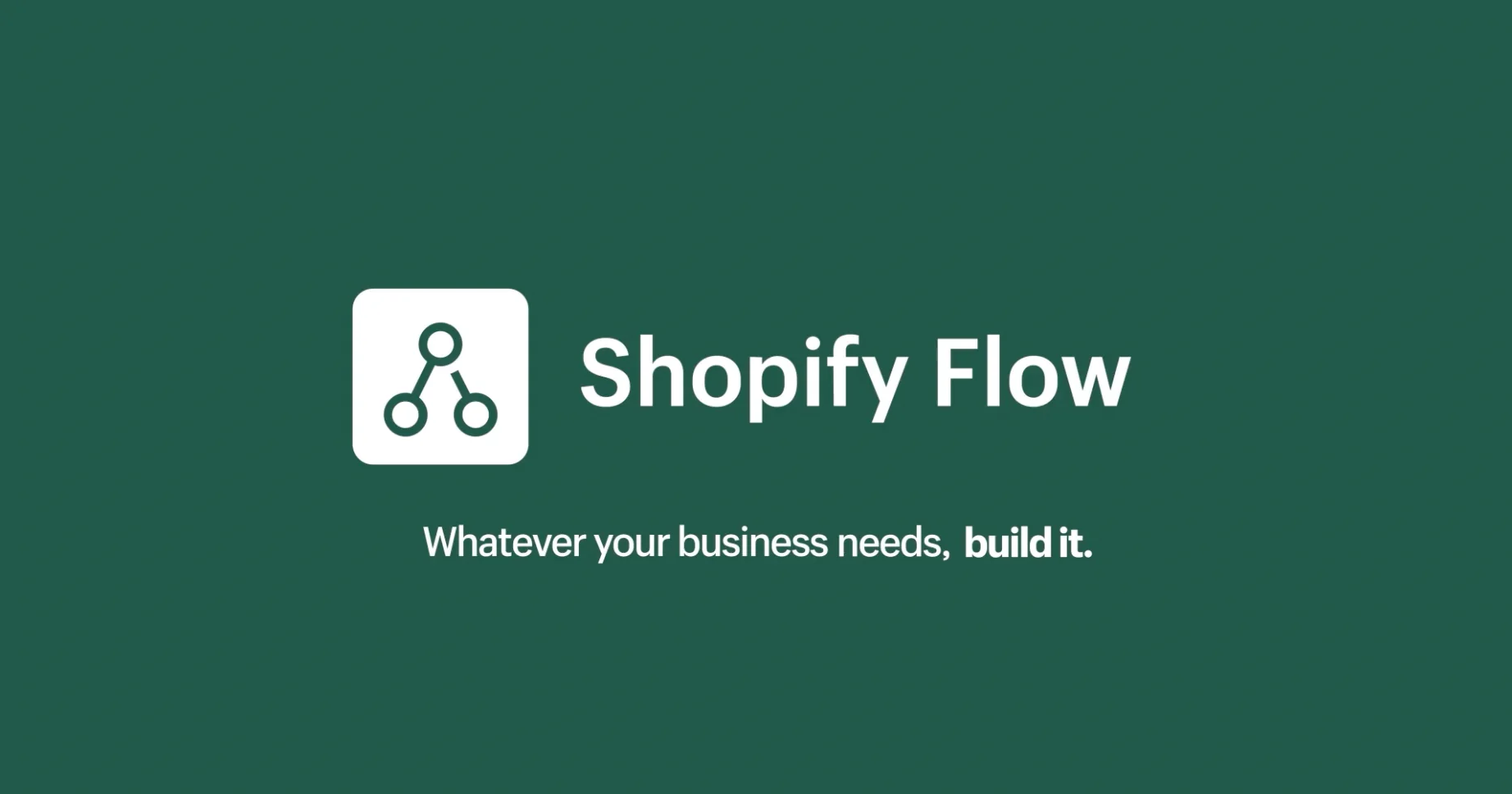Are you searching for an easier way to run your online business? Shopify Flow is an amazing automated tool that can help merchants improve their efficiency and reduce time. In this blog we’ll explore the features of Shopify Flow is, how it can assist you, and how you can install it.
What exactly is Shopify flow?
Shopify Flow is a reflexive automatize app develop by the e-commerce giant Shopify. It helps to reduce time and simplify the e-commerce process to business executives. It’s a reliable, cloud-based software that can quickly help store owners understand, plan and control their business.
Through Shopify Flow, entrepreneurs can effortlessly run their stores in a different way. It comes with a wide array of tools that make it easy to carry out even the most complex tasks. Shopify Flow simplifies responding quickly to customer demands and keeping track of the stock levels, and keeping track of profits and sales.
How do I create Workflows within Shopify Flow?
Setting up Shopify Flow is a simple procedure, putting all the control of automated into the hands of those with different backgrounds in technology. This is a step-by-step guide for how to set up Shopify Flow
- Step 1: Log into Shopify Flow: Login to your Shopify administrator dashboard. Navigate to “Settings.” Go to the “Settings” tab. Click “Apps and sales channels” to gain access Shopify Flow.
- Step 2: Open App: Allow to open the application.
- Step 3: Create a new Workflow: Begin to create the workflow by pressing on the “Create Workflow” button.
- Step 4 Choose a Trigger: Choose a trigger that will begin your workflow. It may be an instance of order place or inventory restocking. It could also be the customer joining a particular group.
- Step 5: Create Conditions: Select output to add your conditions. It could include order value as well as specific products or characteristics of the customer.
- Step 6 Add Actions: Select what actions Shopify Flow will perform once the trigger and conditions match. This could be sending out emails and updating inventory, or applying discounts, or any other actions.
- Step 7: Add Additional Condition: Click the button Otherwise to add an additional condition. It will be activate if your requirements are not met.
- Step 8. Test the Workflow: Perform a test of the workflow prior to launching.
- Step 9: Activate the Workflow: Once you’re satisfy with the setup and testing then press the button to activate your workflow into motion.
- Step 10 Monitor and Analyze: Continuously evaluate the performance and efficiency of your processes. Review the impact on your business and make adjustments according to your needs in order to achieve maximum performance.
By following these easy steps, you can set up a workflow in Shopify. Repeat the process to make a new workflow available for other products.
A workflow can be created by utilizing templates
To build a workflow using the template from Shopify workflow. It’s not that difficult you could make it happen by understanding Access Shopify Flow
- Step 1: Log in to Shopify Flow: Log into your Shopify administrator. Go to “Settings” > “Apps and sales channels.” Choose “Shopify Flow.”
- Step 2: Open the App: Allow the app to open
- Step 3: Create a Workflow Create an entirely new workflow by clicking “Create Workflow “Create workflow.”
- Step 4: Browse Templates Select “Browse templates.” Choose a template that meets your requirements.
- Step 5: Install Template: Search for the template that is compatible with your product and install it.
- Step 6 Edit as needed: Modify the workflow of the template to meet your needs.
- Step 7: Edit the Workflow Title: If you wish, click on the name of the workflow, then change the title.
- Step 8: Activate the Workflow To begin using the workflow, turn the switch between “Off” to “On” in the upper-right corner.
The same procedure can be use to create a straightforward workflow with the template. It is time-saving and offers the best advice from a designer without writing the code. Utilizing a template that is pre-design allows users to design a fantastic workflow in a matter of minutes.
Workflow components of Shopify Flow
Shopify Flow could be the catalyst to a revolutionary shift in the world of online shopping that is designed to free sellers from the time-consuming task of manually completing. In its fundamentals, Shopify Flow operates on a visual builder, offering users with a user-friendly interface to create custom workflows. Triggers circumstances, as well and steps is the basis of these workflows and allows an unmatched level of customization that can be aligned with the requirements of every business.
Trigger
Triggers act as the trigger for workflows, reacting to specific events in Shopify’s Shopify ecosystem. These triggers can be anything from regular, like a placing a new order, to the more intricate, like the level of inventory reaching predefined thresholds. Through the setting of triggers that automate certain tasks like sending personalized emails to customers when they purchase something or updating the inventory levels in real-time.
Conditions
Conditions function as gatekeepers that ensure the workflows are only activated when certain criteria meet. This level of granularity permits merchants to customize the automation to their own specifications. With the use of conditions, merchants are able to define the conditions which must be met for an automation to start. For instance, they can define conditions like sending out personalized email to clients who made an amount of money or update the inventory in the event that a particular product is in short supply. This degree of personalization assures that the automated process is precise and efficient to meet the specific needs of the retailer. requirements.
Actions
Actions represent the wizardry that is automated and represent the tasks that are completed after triggers and conditions have been aligned. When it comes to sending automated emails or updating inventory levels as well as applying discounts Shopify Flow ensures that the desired results are achieved effectively and accurately. Businesses can make their jobs easier and reduce time and costs by improving their efficiency. This will free their time and energy to be able to focus on other important tasks within their businesses. Through Shopify Flow, companies can automate repetitive tasks and still maintain a an individual touch, ultimately improving the overall experience for customers.
One of the most distinctive aspects that distinguish Shopify Flow is it’s seamless integration with different applications and services that are part of Shopify’s Shopify ecosystem. The interconnectivity extends the reach of automation to a greater extent than the basic providing a complete solution that can meet the multiple demands of modern-day eCommerce.
Benefits of using Shopify Flow
Workflow automation in eCommerce has been created to improve and streamline efficiency. It offers a variety of advantages to businesses working within the realm of online retail. This article will provide a thorough overview of the benefits:
1. Time Efficiency:
Reduce the time you spend working on tasks that are repetitive. Automation of workflows can reduce the time spent on routine and boring tasks. This lets your team concentrate on the company’s most strategic and creative elements and increase overall productivity.
2. More Productivity:
Improve productivity by automating manual tasks. The need for manual intervention could be reduced through automation in a variety of ways. This helps reduce the risk of making mistakes and increases the pace of operations which results in increased productivity overall.
3. Improved Customer Service:
Improve customer service by offering faster resolutions to customer questions and problems. Automation allows quick responses to questions and concerns from customers and improves customer service. Speedy resolution to issues can improve the customer’s satisfaction and loyalty.
4. Boosted Sales:
Enhance sales by establishing an easy process to allow customers to buy more items or services in just one click. Through reducing the process of purchasing with automation, customers can effortlessly add additional products or services to their shopping cart without much effort. This simplified experience can increase sales and better conversion rates.
5. Increased Efficiency:
Automation simplifies the entire process of selling, from ordering to fulfilling and reduces the requirement of manual involvement. This efficiency boost allows companies to handle more orders, without compromising quality or customer satisfaction. Automating repetitive tasks may lead employees to concentrate in more strategic, important actions, ultimately leading to growth for the business.
What is the process behind Shopify Flow work?
Shopify assists you in a variety of types of situations. It makes use of the use of triggers as well as actions in order to establish an order of actions that are performed automatically in response to certain circumstances. Here are a few scenarios where you can utilize workflow automation to meet your needs.
With Trigger and Actions
that within Shopify Flow are the workflow beginning points for automating actions whenever a certain event occurs. That are events that initiate the workflow. Examples include creation of orders or registration of customers or inventory changes for products or certain time-based events. That can be configure to respond to a vast range of circumstances, which allows the flexibility of workflow design.
Actions are crucial for automating the store’s operations and processes by making predefined requirements to fulfill these requirements. The tasks and processes are automate and can result in increased efficiency for your e-commerce company. Actions are tasks or changes that happen because of a trigger. They could be sending out emails, updating tags for products making discount codes or altering your order’s status. Workflows can become more complex by linking several actions.
Making Custom Workflows:
- Workflow Builder Shopify Flow provides a visual workflow builder which allows merchants to design custom workflows with a drag-and drop interface. Merchants can select triggers, create conditions, and set up steps step-by-step.
- Condition: These are the rules which determine if an order should be process. For instance, a condition may be use to determine whether an amount of the order exceeds a specific amount or if a particular product is not in stock. Conditions provide granularity to workflows which allows for more specific automation.
- Testing Workflows Before implementing an automated workflow, sellers can utilize testing tools to test trigger events and make sure that the workflow is functioning in the way they would expect. This is vital in identifying and fixing any issues before implementing.
Integrations and Third-Party Apps
- Connectors Shopify Flow integrates with numerous third-party apps and services via connectors. Connectors connect Shopify Flow and external applications and allow for greater capabilities. Connectors allow merchants to integrate additional features and services in their workflows.
- App Ecosystem merchants can make use of the Shopify App Store to discover and install applications that complement and extend features that are part of Shopify Flow. Apps can be customize to provide events or triggers thereby expanding the possibilities of automation.
Automation in the midst of
- Event-Driven Automation: Shopify’s workflow is drive by events, and responds to specific conditions or events instead of running on a predetermined timetable. This makes sure that actions are execute, precisely at the time need, which reduces the need for manual intervention.
- Real-Time Updates: Automatization in Shopify Flow provides real-time updates and responses to changes within the store. For instance, the workflows are able to immediately take action if the creation of a new order or the inventory levels are change.
Monitoring and Adaptability
- Modifying Workflows: Shopify Flow permits merchants to adapt and alter workflows as the business requirements evolve. This flexibility means that automation stays in sync with the changing needs.
- Monitoring and reporting: Shopify Flow provides visibility into the workflow’s execution via logs and reports. Merchants can track the performance of their workflows and evaluate the success of automated processes.
Shopify Flow offers flexibility and control to merchants through permitting them to make the necessary adjustments to their workflows when their business expands. Shopify Flow’s monitoring and report tools allow merchants to keep track of the effectiveness in automated workflows, determine areas for improvement, and take educated decision-making.
Conclusion:
Shopify Flow can be describe as a dazzling light for online sales, allowing you to automate tasks with customizable workflows. The user-friendly interface is suitable for every level of technical proficiency and makes automation easily accessible. conditions, as well as actions allow it to be flexible and allow it to tailor lessons to the specific needs of business. This tool for automation allows businesses to improve efficiency and reduce time and money. Shopify Flow allows merchants to automate workflows, including alerts, update of inventory and discounts, increasing efficiency and maximizing the process.
Employ a skilled Shopify Developer to manage your e-commerce store management and customize using the latest technology developers. Webunity Infotech provides satisfactory services for all types of Shopify application development.
Webunity Infotech is an experienced business that offers quality software solutions. Contact us to schedule a complimentary consultation and let us assist you to improve the performance of your online store and the user experience.
Also Read
- ► Top 5 Universities in Australia for MBA Programs
- ► Top Challenges Faced by Saffron Importers and How to Overcome Them
- ► How Can You Ease Find the Right Umrah Packages from Toronto
- ► Discover How Dental Instrument Suppliers Sialkot are Shaping the Future of Dentistry?
- ► Surgical Instrument Manufacturers in Pakistan are Facing Increasing Demand
- ► Great Tips To Stay Positive During The SSC Exam
- ► Why Outdoor Digital Displays in Lewisville TX are Essential for Event Promotion?
- ► Quality Check to Buy T-Shirts for Men and Women Online in 2025
- ► Increase Foot Traffic with Eye Catching Outdoor Signs for Business in Argyle Texas
- ► Choosing Reliable Miller Laryngoscope Blades USA
- ► Why Is It Important to Contact an Accounting Advisory Firms?
- ► Avoid Costly Repairs with LG Washing Machine Maintenance Services in Mecca
- ► Lace Front Wigs: A Blend of Natural Beauty and Convenience
- ► Suit Moth Hole: Causes, Prevention, and Repair Solutions
- ► Ensuring Optimal Performance with Samsung Washing Machine Maintenance Services in Mecca





